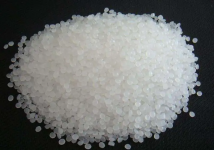read: 1109 time:2025-05-27 16:09:21 from:化易天下
When discussing acidity in organic chemistry, one common comparison is between alcohols and phenols. The question, "Why alcohols are less acidic than phenols," often arises due to their structural similarities. However, a closer look reveals key differences that explain their varying acidities. This article delves into the structural, electronic, and resonance factors that make alcohols less acidic than phenols.
Both alcohols and phenols contain a hydroxyl group (-OH), which is the source of their acidic nature. The acidity of a compound is typically evaluated by how easily it can donate a proton (H+). In alcohols, the hydroxyl group is attached to an alkyl group, while in phenols, it is bonded to an aromatic ring. This distinction is crucial in understanding why alcohols are less acidic than phenols.
In alcohols, the oxygen in the hydroxyl group is only weakly electronegative due to the electron-donating nature of the alkyl group. This means the oxygen holds onto its hydrogen atom more tightly, making it less willing to release it as a proton. This results in alcohols being less acidic.
One of the primary reasons why alcohols are less acidic than phenols lies in the resonance stabilization present in phenols. When phenol loses a proton, the resulting phenoxide ion is stabilized by resonance. The negative charge on the oxygen can delocalize into the aromatic ring, spreading the charge over multiple atoms, which stabilizes the ion.
In contrast, alcohols do not have this ability. The alkyl group attached to the hydroxyl group does not allow for any resonance stabilization. Consequently, the conjugate base of an alcohol (an alkoxide ion) is much less stable than that of a phenol, making alcohols less likely to donate a proton.
Another factor contributing to the lower acidity of alcohols compared to phenols is the inductive effect. In phenols, the aromatic ring has a significant electron-withdrawing effect due to its conjugated π-system. This effect pulls electron density away from the oxygen in the hydroxyl group, making the hydrogen atom more acidic.
In alcohols, the electron-donating nature of the alkyl group increases electron density around the oxygen, making it less likely to release the hydrogen atom. This inductive effect further explains why alcohols are less acidic than phenols.
The difference in acidity between alcohols and phenols can also be quantitatively illustrated by their pKa values. Phenols typically have pKa values around 10, indicating moderate acidity. Alcohols, on the other hand, have much higher pKa values, usually ranging from 15 to 18, showing that they are significantly less acidic. These values underscore the conclusion that alcohols are less acidic than phenols due to the combined effects of resonance stabilization, inductive effects, and the intrinsic properties of their functional groups.
Understanding why alcohols are less acidic than phenols involves examining the interplay between molecular structure, resonance effects, and inductive forces. The lack of resonance stabilization in alcohols, combined with the electron-donating nature of their alkyl groups, makes them significantly less acidic than phenols. This distinction is not just a matter of academic interest but also has practical implications in fields such as organic synthesis and chemical reactivity.
By addressing the question "Why alcohols are less acidic than phenols" from multiple angles, we gain a deeper appreciation of the intricate factors that govern acidity in organic compounds.

Jincheng Petrochemical's 300000 ton polypropylene plant successfully trial production, 2024 polypropylene market analysis

The ABS market remains sluggish, what is the future direction?

Market differentiation of bisphenol A intensifies: prices rise in East China, while prices generally decline in other regions

The production method and process flow of silicone acrylic lotion, and what are the common raw materials